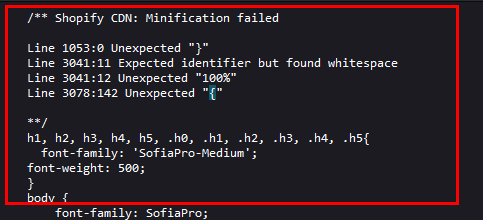Table Of Content
Tips for Optimizing Shopify Product Pages
In Optimizing Shopify Product Pages guide, Optimizing your product pages is critical to improving your online store’s performance. It helps attract more visitors, engage them effectively, and turn them into satisfied customers.
This guide presents professional strategies for enhancing key performance metrics on your Shopify product pages to elevate your online store’s user experience and search engine ranking.
This article will provide you with valuable tips and tricks on how to optimize product pages in Shopify.
- Improving FCP/LCP
- Improving CLS
- Improving TBT
Key Performance Metrics for Shopify Product Pages
1. Improving FCP/LCP
- It is one of the most important aspects of website optimization because it is part of a website’s core web values
- FCP/LCP is all about a user’s first impression of a website. It contains the website’s images.
- It is important to optimize the images for screen resolutions since the majority of non-optimized images directly affect a particular web page’s core web vitals.
Optimize Images
- Use high-resolution images that showcase your products from multiple angles. Ensure that the images are correctly sized and optimized for quick loading.
- Compress and resize images to reduce file size without compromising quality.
- Consider adding zoom functionality to allow customers to see the product more closely.
Optimize CSS
- Reduce unused CSS
- Compress CSS
Example: Remove css like login/create account from the product page.
Reduce the file sizes of your CSS and JavaScript files by removing unnecessary characters and spaces & also minify the Used CSS and Javascript.
- Minify CSS
Example: Shopify automatically minifies files, except when there is an error, such as an open closing bracket, but layout design will not be affected.

Lazy Loading
- Implement lazy loading for images and videos, so they only load when they come into the user’s viewport, improving initial page load times. Only the First Image should be removed from lazyload. (Not Needed this only when the lazyload is applied on lazy size library).
Read this Blog and Find:- Improve LCP and Improve FCP
2. Improving CLS
Content is appearing using javascript, so this will affect CLS, so it needs to be handled, according to the content management height as described in Reserve space for images and videos.
Read this Blog and Find:- Improve CLS
3. Improving TBT
TBT will be affected when the page loads because javascript will load during the page load, which is not required.
The best solution is to add lazy loading to the javascript (e.g. tracking script, third party, theme scripts).
Read this Blog and Find:- Improve TBT
Benefits of Optimizing Shopify Product Pages
Optimization of product pages directly correlates with an online store’s success by
- Boosting Visibility: Enhancing your product pages aids in increasing your store’s visibility across search engines.
- Improving Engagement: Well-optimized pages provide a better user experience, keeping visitors engaged longer.
- Increasing Conversions: A seamless user experience on product pages can encourage visitors to make a purchase, boosting conversion rates.
Conclusion: Shopify Product Page Optimization
By meticulously optimizing your Shopify product pages for FCP, LCP, CLS, and TBT, you create a robust foundation for a stellar online store. Remember, the goal is to provide clear product information, utilize high-quality visuals, apply relevant keywords, improve layout and design, showcase customer reviews, and ensure mobile responsiveness. These strategic optimizations will not only satisfy your customers but also signal to search engines that your pages are of high quality, aiding in achieving top rankings and driving sales.



